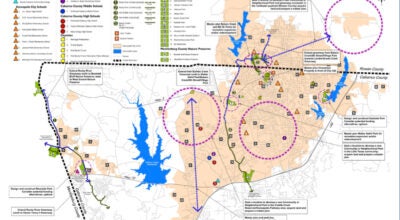Kannapolis City Council gets look at nearly $60 million budget
Published 12:02 am Thursday, May 21, 2015
By Susan Shinn
For The Salisbury Post
KANNAPOLIS — City Council members got their first look at the 2016 budget Monday evening, during a continuation of their May 11 meeting. It includes a .03-cent tax increase, primarily to fund the purchase of Downtown Kannapolis.
City Manager Mike Legg spent 70 minutes presenting highlights of the proposed budget, which totals $59,539,383 — a 12.2 percent increase from the FY 2015 budget.
Including the property tax increase, Legg listed a dozen factors contributing to the budget increase, among them:
• Continued economic growth in the property tax, sales tax, and water and sewer revenues.
• The formation of a general services department to handle not only maintenance, repair and operation for the new City Hall and Police Headquarters, but for all downtown properties. Trent Marlow directs this department.
• Second-year debt service on the new building.
• Transition to an in-house planning and community development department. At its previous meeting, council members heard detailed presentations on a pay and classification study, which will allow the city to remain competitive in the job market. Council members chose to implement a one-time merit pay increase of 3 percent to all employees.
“We strongly believe this option is the way to keep our employees,” Legg said. “If we chose other options, we’d lose some good employees. This was the way to get it done.” Bringing planning positions in-house, will solely focus those roles on Kannapolis — and not split them among other municipalities when contract firms are used, Legg explained.
There are neither water and sewer nor environmental fee increases proposed, Legg noted.
For the fourth consecutive year, there are no medical insurance premium increases.
When Kannapolis put into effect its 10-year plan three years ago, three objectives emerged: construct a city hall and police headquarters, aggressively facilitate economic growth, and implement sound financial management to guide the city’s decisions. Legg pointed out the importance of developing new priorities with new council members now in place, perhaps sometime in the next six months.
In his summary, Legg walked council members through the seven city funds and some of their large items. The proposed general fund budget is $38,395,013, a 7.33 percent increase from last year.
Within the general fund budget are 16 new positions: a general services director, four custodians in general services, one risk manager in human resources and three patrol officers in the police department. Additionally, there are seven employees in the planning department. Some full-time and part-time staff members will be brought from parks and recreation to general services.
The city will purchase 13 new patrol vehicles at a cost of $422,500. Last year, nine vehicles were purchased. A cash sale eliminates financing debt, Legg said. Expenditures for IT expenditures total $412,566, and Legg pointed out this was still a contracted service. “Technology is changing so quickly, it would be hard to have it in-house,” Councilman Tom Kincaid said.
The city will maintain its budget of $500,000 for street resurfacing, maintaining more than 900 streets with more than 225 miles of paved roads.
Legg said that some $1,080,586 will be transferred to other funds, primarily to cover the debt service for the acquisition of the downtown.
Legg was especially pleased that the city’s fund balance sits at 23.97 percent. The 10-year-financial plan sets that goal at 25 percent, and Legg believes that goal will be met in 2016, years ahead of schedule. Legg noted that the balance had dipped to 10.11 percent in 2014, because the city had to pay up front for a FEMA grant, for which it was reimbursed.
“A healthy fund balance helps you do those kinds of things,” Legg said. He added that the bond rate for City Hall was 3.1 percent. “That probably has a lot to do with our healthy financial position.”
The water and sewer fund has an increase of 5.14 percent, which is attributable to growth in the system, thanks to new home construction and more accurate water meter readings as new water meters are installed. The stormwater fund is meant to be self-supportive, and is increased by 1.68 percent, with an 80-cent average rate increase. The environmental fund has a 4.95 percent increase, and the public transit fund has a 1.54 percent increase. The city also has a separation fund for employees who retire before age 62. Because of FICA budgeting, that fund has increased by 20.54 percent.
The downtown fund is totally new territory, with a budget of $1,987,825. The N.C. Music Hall of Fame and Downtown Kannapolis Inc. have been moved to this fund from the general fund, as well as the Jiggy with the Piggy festival.
“This was a challenging budget and an exciting budget,” Legg said. “We don’t have any history at all. This fund budget was developed with input from staff, DFI and Castle & Cooke. It’s a very educated guess, but it’s still a guess.”
The fund includes $1,138,825 from general fund transfers, largely to support the debt service for the downtown properties, and $849,000 projected lease revenues.
Council voted unanimously for the budget to be filed by the city clerk, and setting a public hearing for June 8. Council will vote on the budget at its June 22 meeting.
The proposed budget will be available on the city’s Web site, www.kannapolisnc.gov.
Freelance writer Susan Shinn lives in Salisbury.


